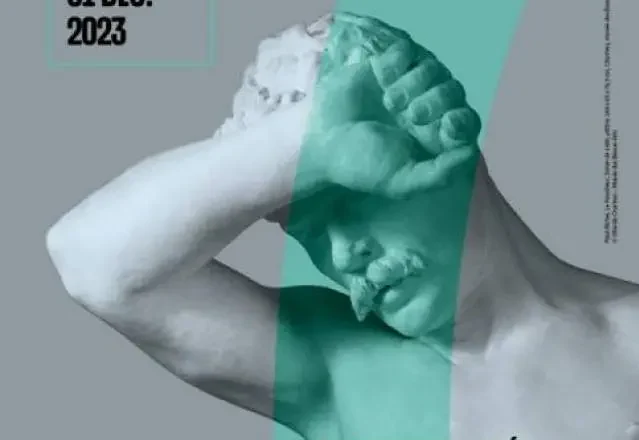On the occasion of the 90th anniversary of his death in 1933, the Chartres Museum of Fine Arts pays tribute to Paul Richer, a doctor and artist from Chartres born in 1849. The exhibition The new heroes. Paul Richer and the sculpture of work explores a particular period. That of 1889 to 1903, during which he devoted himself to creating sculptures of workers and peasants at work. From his childhood in Chartres, to his career as a doctor, to his recognition as an artist: the journey of one of the best designers and illustrators of human anatomy of his time.
By Rosa Tandjaoui (CulturAdvisor)
A native of Chartres
Paul Richer was born on January 17, 1849 in Chartres. From his childhood, he showed an interest in art, particularly sculpture, influenced by the facade of Chartres Cathedral, which he bypassed every day to go to school. A dissipated student, his first years of study were marked by his mischievousness, leading him to change establishments numerous times. However, in 1865 he joined the disciplinary boarding house of the Marist brothers in Montluçon, where a drawing teacher noticed his artistic talent.
After receiving his baccalaureate in 1869, he began studying medicine just before the outbreak of the 1870 war with Prussia. There, he served in the Dujardin-Baumetz ambulances, notably participating in an amputation during the Battle of Loigny (Loiret). This experience is immortalized in his work “Loigny, the night of December 2, 1870”, exhibited at the Army Health Service Museum of Val de Grace, in Paris.
Paul Richer: Loigny, the night of December 2, 1870. Photo credit to the Val de Grace Army Health Service museum, Paris.
After the Commune of 1871, he continued his medical studies as an extern, while continuing to develop his artistic talents.
A career as a doctor
In 1875, Paul Richer illustrated a work by Marc Séé, his associate professor at the faculty of medicine. Unfortunately, his name is not credited on the book, so much so that, deeply disappointed, he decided, and for all his future collaborations, to sign all his drawings.
Thus, it was by illustrating the thesis of one of his friends that he was noticed by Professor Jean-Martin Charcot, then head of department at Salpêtrière, who asked him to come and join him there to finish his internship. There, he began preparing a thesis on hysteria, which he defended in 1879, and which served as the basis for a work published in 1881. In addition, Jean-Martin Charcot named him head of his laboratory in 1882.
The artist ends up winning over the doctor
According to Jean-Baptiste Charcot, who frequented his father’s laboratory as a child, and who at the same time regularly worked with Paul Richer; the latter suffered from color blindness. This perhaps explains why he chose medicine and anatomical drawing rather than painting.
In any case, a member of the Academy of Medicine since 1898, he had already undertaken a second career as a sculptor and in 1903 joined the chair of artistic anatomy at the École des Beaux Art. In particular, he carries out the Monument to Louis Pasteur (1903), located rue Danièle-Casanova opposite the Chartres prefecture. Thus, Paul Richer ends his career as general inspector of drawing education. He died on December 17, 1933 in Paris, at the age of 84.
Paul Richer: the Monument to Louis Pasteur (1903), located rue Danièle-Casanova opposite the Chartres prefecture. Photo credit wikimedia commons. An “Exhibition of national interest”
Labeled “of national interest” by the Ministry of Culture, this exhibition focuses on a very specific period. That of 1889 to 1903, during which Paul Richer devoted himself to creating sculptures of workers and peasants at work. Indeed, this era saw a desire for realism assert itself in the arts. Particularly in sculpture, under the leadership of artists such as: Achille d’Orsi, Vincenzo Vela, Constantin Meunier, Auguste Rodin and Henri Bouchard.
But also a certain Jules Dalou, who exhibited his work in London in 1873. Peasant woman feeding her child, the first realistic, life-size representation of a peasant woman in French sculpture. Dalou and Richer established a long and fruitful friendship, and it is this close collaboration that this exhibition also highlights.
A unique opportunity to discover the career of a major Chartres artist doctor, through some of his most emblematic works such as sculptures: The grim Reaper (1889) or Lumberjack of the La Londe forest (1899), plaster reliefs such as Field work (1895), and even some drawings.
Paul Richer : Lumberjack of the La Londe forest (1899). Photo credit wikimedia commons. Lots of entertainment
The exhibition The new heroes. Paul Richer and the sculpture of work is also an opportunity for the Chartres Museum of Fine Arts to offer a rich and varied cultural program. This is a conference “Paul Richer and photography“, guided tours, a theatrical reading “Work is health“, a music and dance show, evenings “The palace of the senses“, drawing classes and educational workshops”The little heroes” for children, with cubes, puzzles, coloring books and drawing lessons.
To discover with family
This exhibition is ideal for children aged 10 and over. Indeed, it offers them a unique opportunity to explore history, art, medicine and society through the eyes of an extremely versatile medical artist. Thus, it can ideally enrich and complement national education programs by encouraging the discovery of local history, the exploration of the duality between medicine and art, the appreciation of sculpture, drawing and realistic art, historical contextualization, collaborations and influences between artists, reflection on labor and working history, and finally, the development of critical skills.
An enriching visit that is sure to inspire our curious young minds.
Exhibition and cultural programming
#Chartres #Paul #Richer #sculptor #Work #MagCentre

/nginx/o/2023/09/27/15618323t1h5bef.jpg)
